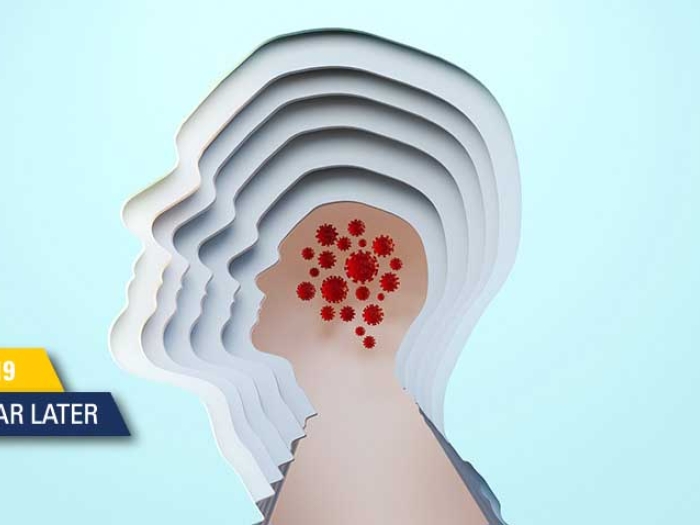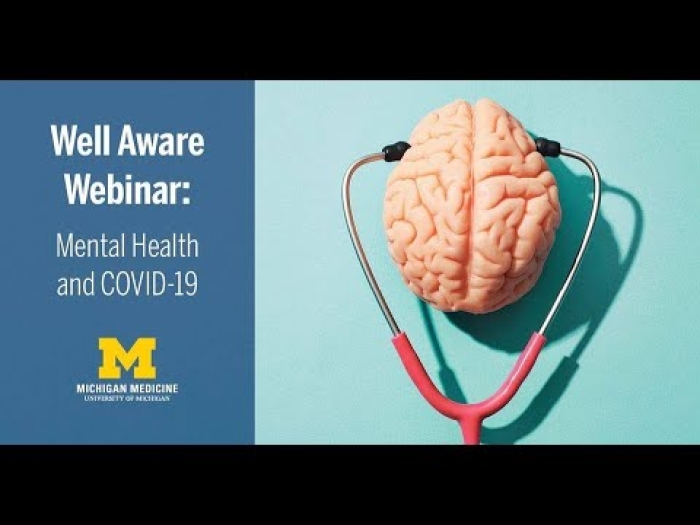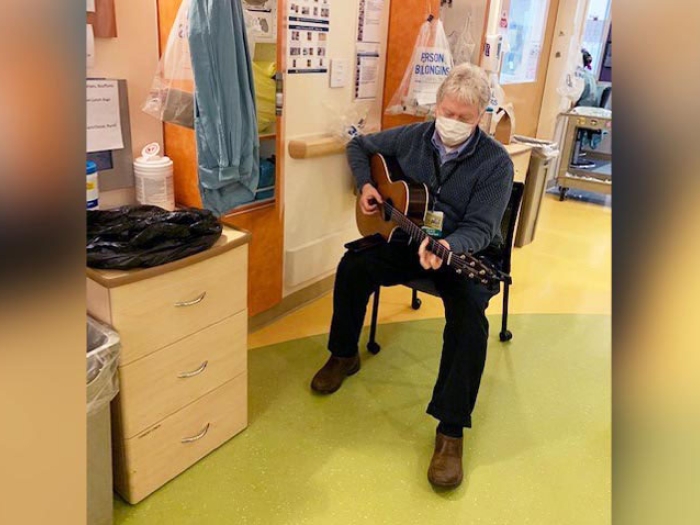Anxiety affects everyone to some degree. Consider these quick coping mechanisms when it surfaces.
7:00 AM
Author |

Have you ever found yourself ruminating endlessly about something from your past or in your future, leading you to feel tense, nervous, apprehensive or stressed? If so, you may have experienced anxiety.
MORE FROM MICHIGAN: Sign up for our weekly newsletter
Anxiety is a normal part of life. It's our brain's alarm system helping us to identify things in our environment that we feel may pose a risk to our health and well-being. Onset of an acute or chronic illness, for example, might trigger our anxiety, making us feel unsafe and fearful. This perpetual worry can affect the way we feel, how we think and how we behave.
When anxiety interferes with daily life, though, it may be time to take action. Contact your primary care physician or social worker to discuss resources that could help.
For those who find anxiety a frequent but not debilitating occurrence, the following exercises can help quiet your alarm in the present and keep it less active in the future.
Your mind may begin to wander during the process. If distractions arise (thoughts about tonight's dinner or those unread work emails), simply observe the intrusion and let it float on by. Bring your attention back to the exercise and keep at it.
The result: You'll feel calmer and more in control.
Square breathing exercises for anxiety
Square breathing helps regulate the amount of oxygen and carbon dioxide in our bodies, which can often be out of balance when anxiety is at play. Square breathing involves breathing in, holding the breath, exhaling and holding it again — all for four counts apiece.
Repeat the cycle for several minutes. This anxiety relief exercise promotes relaxation and leads to clearer thoughts, helping to reset emotional peaks.

Mindfulness exercise for anxiety
The art of living in the moment, mindfulness seeks to bring a person fully into the present by engaging all five senses. So much of our time, after all, is spent focusing on the past or future, or simply going about our busy lives without thinking twice.
SEE ALSO: Panic Attack vs. Anxiety Attack: 6 Things to Know
Mindfulness can be practiced anywhere and applied to any activity. Consider the process of taking a shower: Most of us just go through a pattern of steps, rushing through the routine to move forward with our day. A mindful shower would involve paying attention to the smell of your soap, the feel of the warm water on your different body parts, the sound of the water hitting your back and the steam enveloping the bathroom, for example.
By observing things in real time and being aware, we can calm the part of the logical mind fixated on what comes next. This helps us appreciate things more and reduces stress and worry.
Progressive muscle relaxation (PMR) for anxiety
Anxiety often manifests itself physically in our bodies. One common physical reaction to anxiety is muscle tension. When we begin to experience anxiety, our bodies can stay tense without us even realizing it. Ironically, our brain then perceives this tension and treats it as a warning sign that there is reason to be worried, and the anxiety alarm starts to sound. It is a vicious cycle.
Progressive muscle relaxation seeks to help your brain recognize what it feels like for your muscles to be in a relaxed, tension-free state. To initiate PMR, get comfortable in a seated position. Starting at the tips of your toes and working your way up, flex each major muscle group for a count of 10 seconds, then release for a count of 10 seconds. Move on to the next group of muscles, flexing for 10 seconds, then releasing for 10 seconds.
This anxiety relief exercise helps remind the body of the difference between tension and relaxation, which can help the brain identify and remedy a tense situation. As this unconscious tension tends to trip the anxiety alarm, keeping muscles relaxed as much as possible is an important tool that can combat ongoing anxiety.

Explore a variety of health care news & stories by visiting the Health Lab home page for more articles.

Department of Communication at Michigan Medicine
Want top health & research news weekly? Sign up for Health Lab’s newsletters today!





